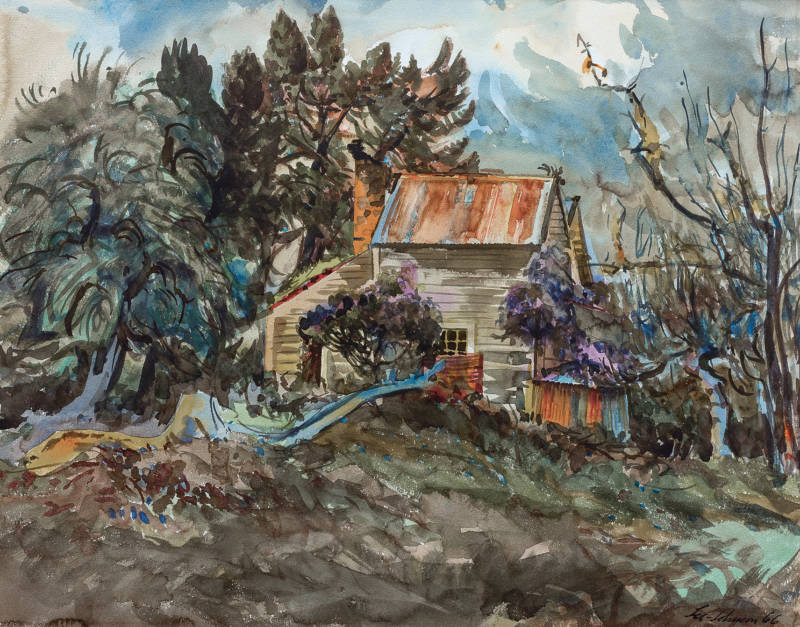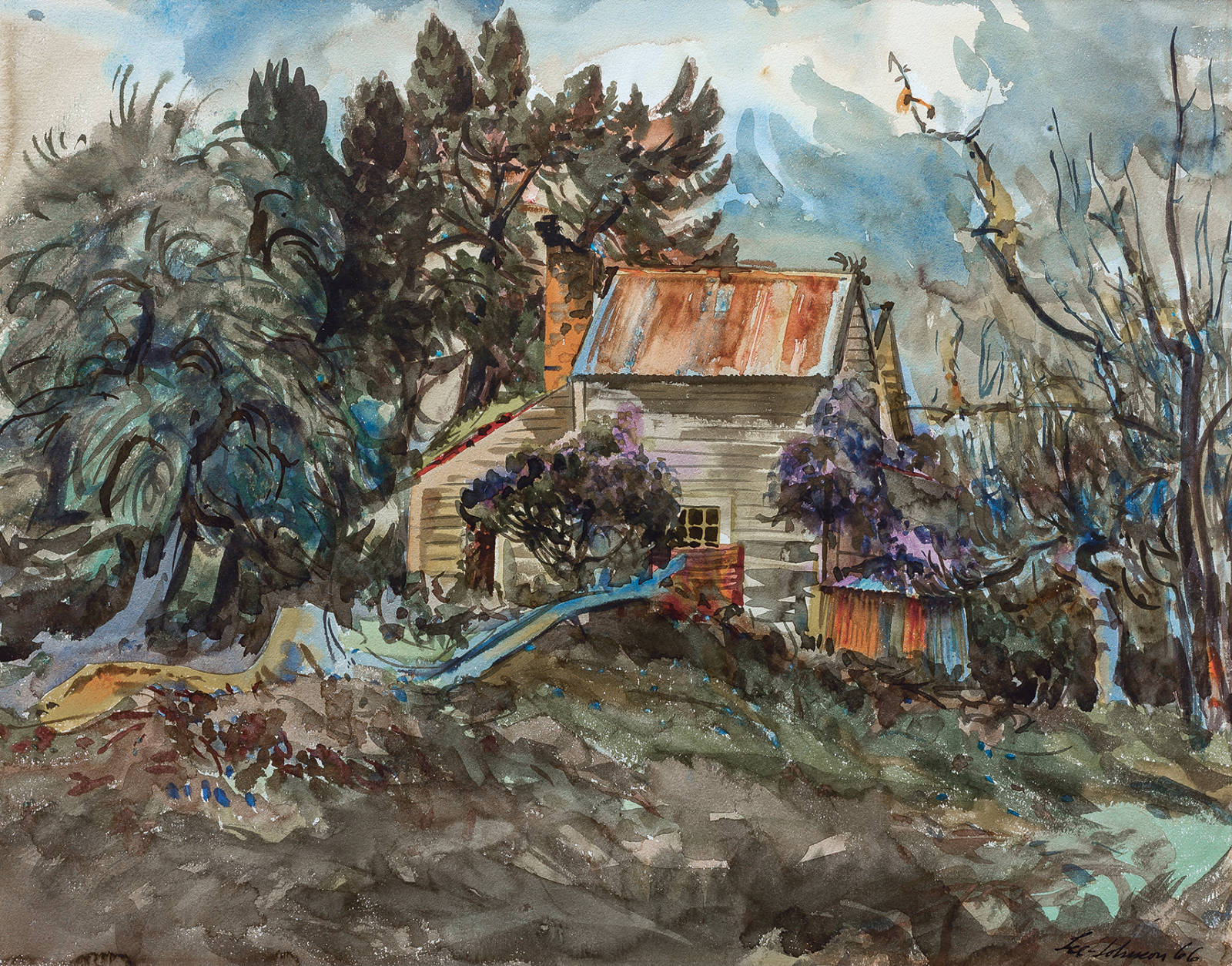LEE-JOHNSON, Eric;
Old House at Minniesdale, Albertland
1966
Ink and watercolour on paper
440 x 560mm

The following text comes from the catalogue for the exhibition Tirohanga Whānui.
A King Country childhood gave Eric Lee-Johnson an aversion to cities. Throughout his life, he preferred to live in out of the way places and in his art and photography he sought a distinctive regional imagery. Even when not living there, he travelled frequently to Te Tai Tokerau Northland, where, as his biographer Maurice Shadbolt tells us, ‘He became fascinated by its frontier-type landscape. It was rich in New Zealand history and its derelict buildings, abandoned churches and pā sites proved a rich storehouse of images for paintings.’ From 1948, Lee-Johnson and his family lived at Hokianga and in 1955 his photographs about Opononi and its famous dolphin, Opo, were widely circulated in Aotearoa and Australia. From the late 1960s, he lived first at Mahurangi Warkworth, then Kamo, and eventually Howick.
The extraordinary story of the British non-conformist immigrants who came to Albertland, north of the Kaipara Harbour, between 1862 and 1865 was bound to appeal to Lee-Johnson’s imagination. Thwarted by isolation and difficulties of access, the planned township at Port Albert was never properly established. The settlers’ dream of a classless society established on the banks of the Oruawharo River could not be realised. Many of those who nurtured it now lie buried in the historic Minniesdale churchyard.
This watercolour shows the battering of time suffered by abandoned houses all over Northland. The painter’s use of vigorous brushstrokes over the whole surface of the paper conveys a vivid impression of a house caught up in a chaotic whirlwind of destruction and decay.
Exhibition History
Tirohanga Whānui: Views from the Past, Te Kōngahu Museum of Waitangi, 15 April to 15 September 2017

